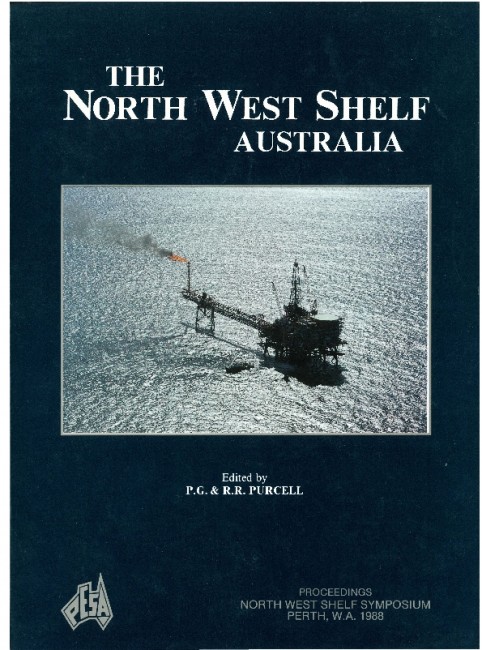Publication Name: The North West Shelf Australia
Authors: Woodside Offshore Petroleum
Date Published: July 1988
Number of Pages: 25
Reference Type: Book Section
Abstract:
Petroleum exploration in the Barrow-Dampier Sub-basin was initiated in 1954 by a reconaissance geologicalsurvey of Barrow Island which recognised its anticlinal character. But it was not until 1962 that permission was
granted to revisit the island because of potential contamination from the British atomic test on the nearby Monte Bello Islands.
In 1964 oil was discovered in several zones in Barrow Island 1. Marine seismic surveys were stimulated by this
discovery and the first offshore well (Legendre 1) made a significant, but non-commercial, discovery, closely
followed by several other similar shows in other wells. In 1971-1972 the major gas-condensate discoveries of the Rankin Platform were made. It was not until the 1980s that a number of small oil fields were discovered along the south-eastern margin of the deep basins.
The Dampier Sub-basin is a deep, linear, northeasttrending trough of Triassic, Jurassic, and Cretaceous sediments which is contiguous with the similar, but rhomboid-shaped, Barrow Sub-basin to the south-west. The main structural grain is provided by two northeasttrending Jurassic strike-slip faults - the Rosemary Fault
and a fault complex beneath the Kendrew Terrace.
Movement on these, together with the en echelon Flinders Fault System in the southern Barrow Sub-basin, produced the depocentres for the thick Jurassic and Cretaceous sequences with which the main hydrocarbon occurrences are associated.
The fluviatile to marginal marine sandstones of the Mungaroo Formation (Late Triassic) are the reservoirs of the major gas-condensate fields of the Rankin Platform. Early Jurassic deposition provided further potential reservoirs, followed by a thick sequence of calcareous claystones.
In the Middle Jurassic, a regressive phase pushed deltaic sandstones into the basin, particularly near the southern margin. Major tectonism at the end of this regression caused the uplift of the platform and
accelerated down-dropping of the troughs which filled with dark claystones which may be the source of much
of the liquid hydrocarbons in the area. In the Neocomian, a delta formed in the southern part of the Barrow Subbasin. Sands within the delta complex are the reservoirs of several oil accumulations. The whole North West Shelf was inundated by a marine transgression at the end of the Aptian. Marine shales at the base of this sequence form the seal to the major gas fields of the Rankin Platform.
A localised storm-winnowed shelf sandstone near the base of this sequence (the Windalia Sandstone Member)
is the reservoir of the major Barrow Island oil accumulation. The marine shale sequence becomes progressively more calcareous seawards. In the Late Cretaceous and Tertiary sedimentation became more calcareous with shelfal limestones predominating in the Eocene and a widespread barrier reef developing in the Miocene.
Carbonaceous claystones within the Late Triassic sequence are potential source rocks for both oil and gas.
The Lower Triassic marine shale contains thin zones of oil-prone sapropel. The Lower to Middle Jurassic shales
have excellent source potential for both oil and gas and are thought to be the source of the oil accumulations at
the northeastern end of the Dampier Sub-basin. The Upper Jurassic Dingo Claystone is thought to be the source of some of the oil accumulations in the Barrow Sub-basin. Early Cretaceous rocks are barely mature in the deeper parts of the basin and are thought to have generated only insignificant amounts of oil. The main period of oil migration is thought to be in the Middle to Late Miocene when a tectonic pulse reactivated many of the older faults to provide conduits for oil migration.


